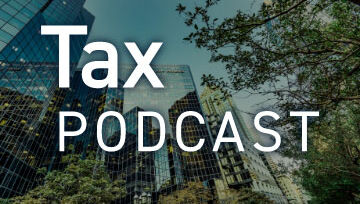What Is the Research and Development (R&D) Tax Credit?
The Internal Revenue Code (IRC) Section 41 Credit for Increasing Research Activities (R&D Tax Credit) is an incremental tax credit, which is an often overlooked and misunderstood tax benefit for performing research and development activities. The R&D Tax Credit intends to incentivize companies to perform development activities within the U.S. and spur additional domestic R&D growth.
The R&D Tax Credit provides a dollar-for-dollar offset to taxable income for businesses that are paying taxes. The Protecting Americans from Tax Hikes (PATH) Act in 2017 created an opportunity for start-up companies to monetize the tax credit as an offset to employer-paid payroll taxes. This is up to $250,000 per year to offset the Federal Insurance Contributions Act (FICA). Starting in 2023, this increased up to another $250,000 to offset employer-paid Medicare taxes.
To claim the R&D Tax Credit, taxpayers must identify the amount of qualified research expenses (QREs) in prior years to calculate a base amount of qualified spending that must be overcome before current year spending becomes eligible. Most tax preparers associated R&D only with technology, biotechnology and pharmaceutical-type activities. Recent U.S. Department of Treasury regulations have substantially broadened the range of taxpayers eligible for the R&D Tax Credit.
With PATH Act changes to make the tax credit permanent and accessible, more taxpayers can plan for it and count on realizing the benefits.
What Activities Qualify for the R&D Tax Credit?
A myriad of activities can qualify for the R&D Tax Credit. The intent of the R&D Tax Credit is to incentivize companies with employees or contractors physically in the U.S. to work on something new or improved for the company that is technically challenging and requires an iterative development process to resolve. There are two tests that companies can utilize to determine whether they have qualifying activities:
Four-Part Test for Qualifying Activities
- Permitted purpose: The activity performed must relate to a new or improved product, process or design (business component) in terms of:
- Function
- Performance
- Reliability
- Quality
- Technological in nature: The activity must fundamentally rely on principles of:
- Physical science
- Biological science
- Engineering
- Computer science
- Elimination of uncertainty: The activity must be intended to discover information to eliminate uncertainty concerning the capability, method, or design for developing or improving a business component.
- Process of experimentation: The activity must be substantially related to identifying uncertainties in product, process, or design development, evaluating alternatives to eliminate those uncertainties, and testing or modeling to refine or discard those alternatives. These activities must constitute a significant portion of the company’s R&D efforts.
Heightened Three-Part Test: Additional Test for Internal Use Software
- Significant economic risk
- Innovativeness test
- Commercial unavailability
To help better determine eligibility, please be aware that the following activities listed below are non-qualifying activities:
- Foreign research: Research activities conducted outside of the U.S., Puerto Rico or other U.S. territories.
- Funded research: Research funded by a government grant or by a customer must be analyzed to determine whether the taxpayer bears significant rights to the research and economic risk associated with the research.
- Routine testing, quality control, maintenance: Quality control testing or inspection to determine whether particular units of materials or products conform to pre-identified parameters is not qualified. Quality control testing determines if the design of a product or process is appropriate and may be qualified.
- Adaptations, duplications, reverse engineering: Adaptation of an existing product to a particular customer requirement or needs without any technical uncertainty present.
- Non-scientific research: Market research, efficiency surveys or advertising studies.
- Aesthetics: Aesthetic changes to style, taste, cosmetic or seasonal changes.
What Types of Expenses Are Eligible for the R&D Tax Credit?
Qualified research expenses include:
- Employee wages: Portion of eligible W-2 box 1 wages for employees performing, directly supervising or supporting qualified research
- Supplies:
- Non-depreciable in nature unless related to prototypes
- Extraordinary utilities
- Materials used in testing
- First-run production that is scrapped
- Contract research: 65% of amounts paid to vendors or contractors performing research on behalf of the taxpayer physically within the U.S.
- Research consortia: 75% of U.S.-based eligible work
- Basic research payments: Payments made to a university or other qualified organizations
- Computer lease or rentals: Amounts paid for cloud computing as it relates to development environments
My Company Performs Research and Development Work for Other Companies. Could These Activities Qualify?
These activities could qualify. There are certain requirements that must be evaluated to determine whether the R&D Tax Credit resides with you or the company that hired you.
What Are the Benefits of R&D Tax Credits?
There are great advantages that R&D Tax Credits can offer a company, including:
- Tax savings: The primary benefit of R&D Tax Credits is the tax savings they provide. Companies can use these credits to offset their income tax liability, reducing the amount of taxes they owe.
- Cash flow: R&D Tax Credits can also provide a cash flow benefit for companies. If a company has more credits than taxes owed, it can carry the credits forward or back to offset taxes in other years.
- Opportunity for innovation: By providing tax incentives for R&D activities, the government encourages companies to invest in new technologies and processes, which can lead to innovation and growth.
- Competitive advantage: Companies that invest in R&D activities may gain a competitive advantage by developing new products or services, improving existing ones, or reducing costs through innovation.
- Job creation: R&D activities often require specialized skills and knowledge, which can lead to the creation of high-paying jobs in fields such as science, engineering, and technology.
Can I Claim R&D Tax Credits for Prior Years?
Yes, if eligible R&D activities have been conducted in the past and the R&D Tax Credit has not been claimed in those years, taxpayers can still claim them for those open tax years. However, if the tax year has already been closed or the tax return has already been filed, the taxpayer cannot claim R&D Tax Credits for that particular year. This will vary from company to company, but generally, open statutes are in the current year and the prior three years. Depending on facts and circumstances (net operating losses, open audits, etc.), additional years may be open.
How Much R&D Tax Credit Do I or Can I Qualify For?
Federal tax credits generally offer a 9% to 14% return on investment for every qualified dollar of QRE. Additionally, 36 states have their own R&D Tax Credit in addition to the federal tax credit.
How Do You Price R&D Tax Credit Studies?
Cherry Bekaert performs a complimentary detailed scoping exercise to develop a custom-tailored work plan for your R&D Tax Credit study. This is based on a company’s specific facts and circumstances (number of years, states, complexity, acquisitions/dispositions). You will be presented with a summary of federal and/or state estimated benefits with our proposed fees.
Are All Industries Eligible for the R&D Tax Credit?
The R&D Tax Credit is not limited to a specific industry. It is an activities-based tax credit. If a company’s employees or contractors are physically working in the U.S. or U.S.-controlled territories and meet the requirements of the four-part test, then you may be eligible, pending other criteria.
Industry Specific Examples of Qualifying R&D Activities
Below are industry-specific examples of activities your organization may be doing that could qualify for R&D tax credits:
Technology and Software Development:
- Integration of new and legacy systems
- Design and testing of systems, such as hardware or software
- Modification of existing systems and processes to improve performance, scalability, security, or throughput
- Improvements to off-the-shelf solutions to meet the needs of the taxpayer’s environment
Industrial Manufacturing:
- Design, construction, and testing of prototypes or pilot models
- Development of new construction or processing techniques to improve reliability in the manufacturing process
- Development of new techniques to address health, safety and environmental concerns
- Attempts to minimize product failure in the production process
Life Sciences and Pharmaceutical:
- Experimentation with new or alternative materials or reagents into existing processes
- Development of new or improved informatics or analytical tools
- Clinical trials
- CRO activities
Financial Services:
- Integration of new platforms with in-house developed software
- Development of new trading platforms
- Integration of new financial products (e.g., crypto) into new or existing applications and systems
- Financial modeling and the development of new algorithms
Food and Beverage:
- Test kitchen activities
- Development of new packaging techniques
- Attempts to improve manufacturing processes
Energy Organizations:
- Design and development of networks and systems to monitor energy capacity transmission
- Development of new and improved batteries
- Development of new biofuel production techniques
Architecture:
- Developing innovative design processes to enhance efficiency or sustainability
- Creating software tools to streamline building design and construction workflows
- Implementing advanced modeling techniques for structural analysis or energy performance optimization
Engineering:
- Researching and developing new materials for use in aerospace, automotive, or electronics industries
- Designing and testing prototype systems for improved product performance or safety
- Innovating energy-efficient technologies for renewable energy systems or smart infrastructure
Your Guide Forward
Cherry Bekaert’s experienced R&D Tax Credit team is dedicated to helping companies navigate the complex process of determining their eligibility for R&D tax credits. Our team of experts can answer any questions you may have about the R&D Tax Credit and provide guidance on how to maximize your tax savings. We offer complimentary scope services for R&D eligibility, which allows us to evaluate your company’s R&D activities and determine if you qualify for the tax credit. Let us help you take advantage of this valuable tax incentive and support your company’s innovation and growth.
Related Insights
- Podcast: Tax Credits: Cash Savings for Technology Companies as They Scale
- Article: Updated Guidance on R&D Expenditures: Notice 2024-12 and Rev. Proc. 2024-9
- Article: Understanding IRS Notice 2023-63: Section 174 SRE Capitalization and Amortization Guidance
- Article: Importance of R&D Tax Credit Documentation: Lessons from Recent Court Cases






